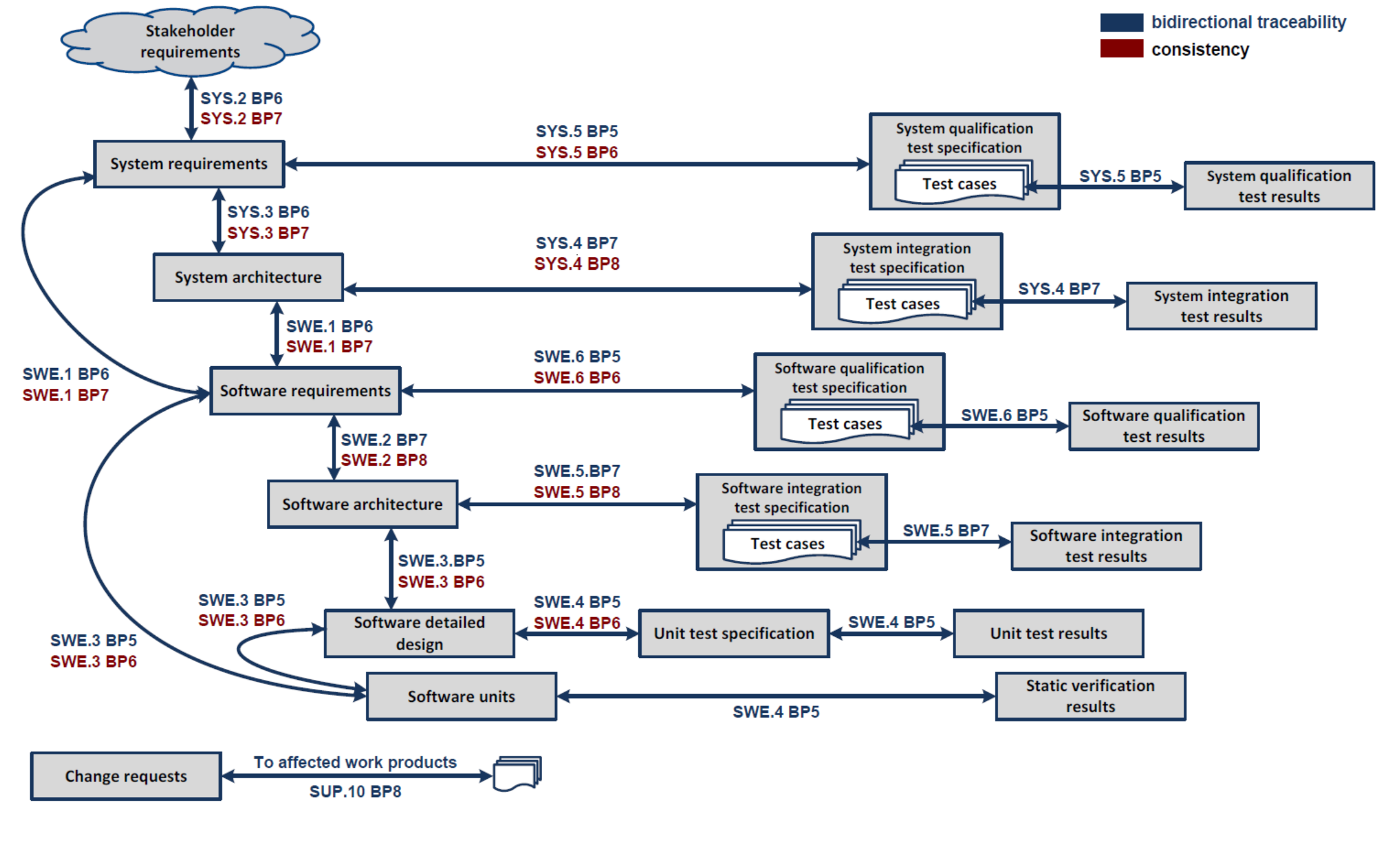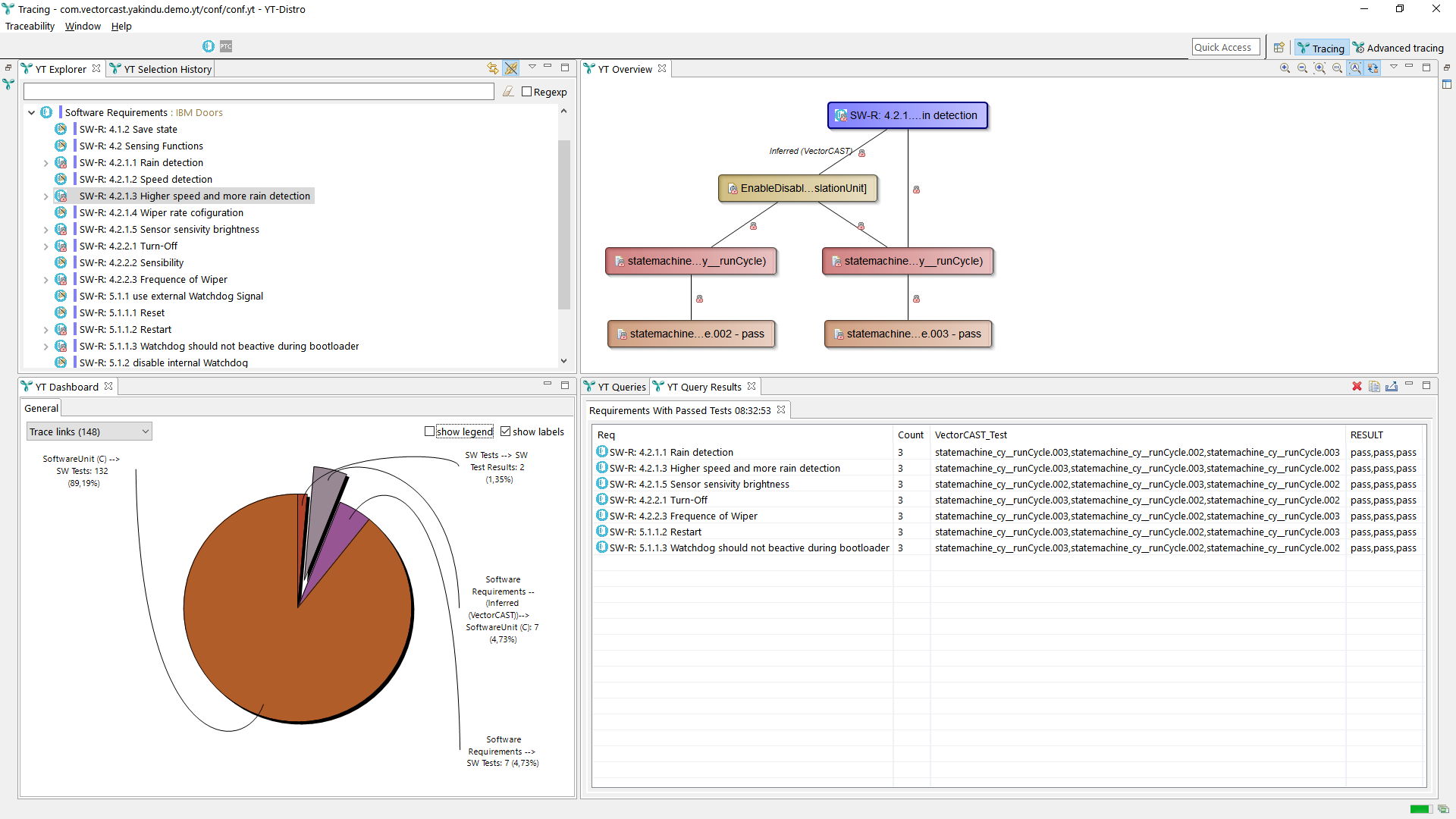 Information: YAKINDU Traceability Is Now itemis ANALYZE
Information: YAKINDU Traceability Is Now itemis ANALYZE
In the development of safety-critical systems it is essential to prove that the developed product fullfills all requirements (including system requirements, safety requirements and security requirements) to ensure the correct functionality and to prove that engineering is up to the state-of-the-art for legal reasons.
In the automotive industry one of the standard that provides information about the expected traceability is the Automotive Spice PAM. It is shown in Figure D.4 from the Automotive Spice PAM 3.0 document:

We see that the requested traceability and consistency builds a web of artifact relationships that needs to be built and managed. Usually, heterogenous tools are being used in the development of automotive systems and a dedicated tool is required for managing all the artifact links. We easily see from the diagram above, that the solution needs to be able e.g. to trace from architecture tools to test tools as well as from software requirements to (possibly different) test tools to be able to fulfil the expectations of Automotive Spice.
Our YAKINDU Traceability (now itemis ANALYZE) solutions supports two approaches, which can be freely combined:
- YAKINDU Traceability (now itemis ANALYZE) can maintain its own database of trace links (i.e. links that are not managed in any other of the tools). It has a flexible concept of tool adapters so it can be easily connected to test tools like VectorCAST and TPT as well as test frameworks like CUnit or GoogleTest.
- YAKINDU Traceability (now itemis ANALYZE) can integrate other sources of trace links (e.g. those managed within DOORS, or within UML models) and combine all of these with its own links to a consolidated and integrated view on the traceability.

Since YAKINDU Traceability (now itemis ANALYZE) is highly configurable and comes with generic adapters for Text- and XML-based formats, these can be easily configured to work e.g. with VectorCAST. One of the possible workflows is:
- Use VectorCASTs functionality to import requirements and create a local traceability from these requirements to test cases
- Run all your tests
- VectorCAST now supports the export of its information, including the connection from requirements to the test cases and their execution results.
- This information is now read from YAKINDU Traceability (now itemis ANALYZE) and is now part of the full traceability pictures, supporting elaborate queries and statistics reports, including not only the trace to the test cases, but also to their execution status.

Comments